 |
|
| seagrasses text index | photo index |
| Seagrasses > Family Cymodoceaceae |
| Serrated
ribbon seagrass Cymodocea serrulata Family Cymodoceaceae updated Sep 2017
Where seen? These seagrasses are common on Pulau Semakau, growing among the more dominant Tape seagrass (Enhalus acoroides). They are also commonly seen on Cyrene Reef. Serrated ribbon seagrass is considered common and widespread throughout tropical Indo-West Pacific usually dominant in muddy reef tops. In reefs, it grow mixed with other seagrasses commonly found in such ecosystems. It quickly grows over Halophila beds as part of natural succession. Features: Long ribbon-like leaves with blunt, rounded tips that have serrations (these are sometimes very tiny). The leaf scars around the upright stem are not continuous. It has thick rhizomes (underground stems). The leaf sheaths around the leaf are flattened. Sometimes seen with reddish bands. Sometimes confused with other ribbon-like seagrasses. Here's more on how to tell apart ribbon-like seagrasses. Flowers and fruits: This seagrass has separate male and female plants. Flowering is rarely observed. The female flower appears in pairs at the base of the leaves. They have a prong-like stigma. The male flowers form within the leaf sheath. Seeds (10mm) are dark coloured with a hard-coated, beaked nut with three blunt ridges along the length. The seeds are attached to the rhizome. Role in the habitat: Dugongs eat this seagrass where smaller Halophila and Halodule are not available. Status and threats: It is listed as 'Endangered' on the Red List of threatened plants of Singapore. |
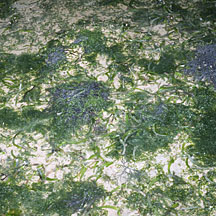 Pulau Sekudu, Oct 11 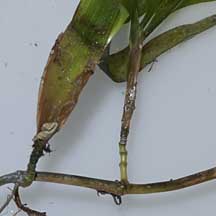 Pulau Semakau, May 09 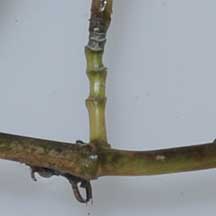 |
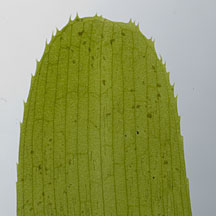 Cyrene Reef, Aug 11 |
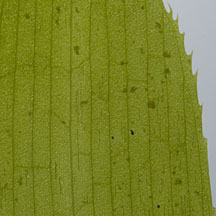 |
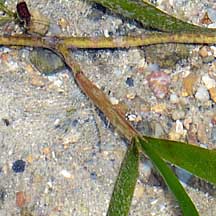 Flattened leaf sheath. Cyrene Reef, Mar 07 |
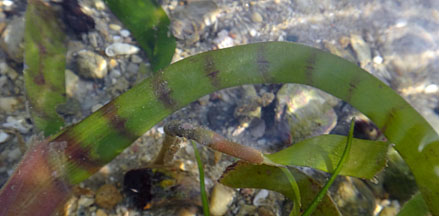 Sometimes seen with reddish bands. Cyrene, Jun 12 |
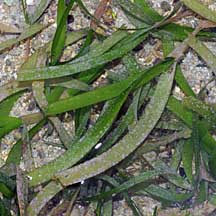 Cyrene Reef, Dec 08 |
|
| Serrated ribbon seagrass on Singapore shores |
| Photos of Serrated ribbon seagrass for free download from wildsingapore flickr |
| Distribution in Singapore on this wildsingapore flickr map |
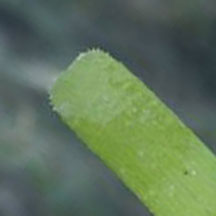 Seringat Kias, Sep 17 Photo shared by Jonathan Tan. |
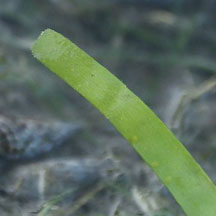 |
Links
|
